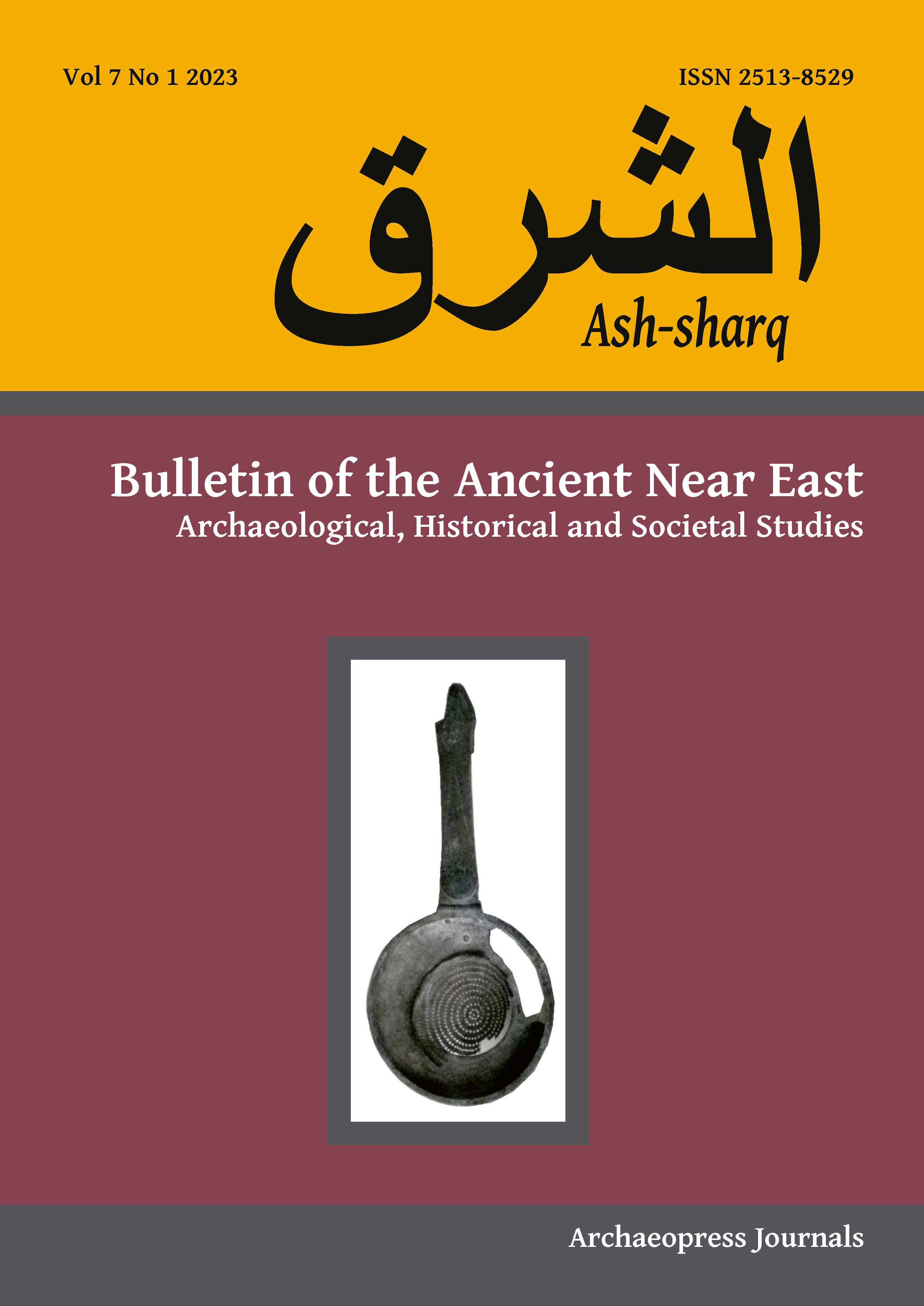Taharqa, not Ushanahuru
Reconsidering the identity of the African individual on the victory stele of Esarhaddon
Keywords:
Taharqa, Esarhaddon victory stele, Assyrian kingsAbstract
The Victory Stele of Esarhaddon (VA 2708) conveys a scene in which the Assyrian king Esarhaddon (680-669 BCE) stands holding two foreign potentates by lead ropes (ṣerretu), with the ropes ending in rings fastened to the lips of the potentates. A text which commemorates the conquest of Egypt by Assyria in 671 BCE accompanies the scene.
References
Barnett, R.D. 1976. Sculptures from the North Palace of Ashurbanipal at Nineveh. London: Trustees of the British Museum.
Borger, R. 1996. Beiträge zum Inschriftenwerk Assurbanipals. Wiesbaden: Harrassowitz.
Börker-Klähn, J. 1982. Altvorderasiatische Bildstelen und vergleichbare Felsreliefs (BagF 4). Mainz am Rhein: Verlag Philipp von Zabern.
Frame, G. 1995. Rulers of Babylonia: From the Second Dynasty of Isin to the End of Assyrian Domination (1157-612 BC) (RIMB 2). Toronto and London: University of Toronto Press.
Gerardi, P. 1988. Epigraphs and Assyrian palace reliefs: The development of the epigraphic text. Journal of Cuneiform Studies 40: 1–35.
Grayson, A.K. 1975. Assyrian and Babylonian Chronicles (TCS 5). Locust Valley: J.J. Augustin Publisher.
Grayson, A.K. 1991. Assyrian Rulers of the Early First Millennium BC I (1114-859 BC) (RIMA 2). Toronto and London: University of Toronto Press.
Grayson, A.K. 1996. Assyrian Rulers of the Early First Millennium BC II (858-745 BC) (RIMA 3). Toronto and London: University of Toronto Press.
Karlsson, M. 2019. ‘The City of the kipkip-Speech’? Kipkipi in Ashurbanipal’s Inscriptions. Der Antike Sudan: Mitteilungen der Sudanarchäologischen Gesellschaft zu Berlin 30: 175–179.
Karlsson, M. 2022. ‘An insignia of his kingship’: Necho I’s golden allu revisited. State Archives of Assyria Bulletin 28: 7-17.
Karmel Thomason, A. 2004. From Sennacherib’s Bronzes to Taharqa’s Feet: Conceptions of the Material World at Nineveh. Iraq 66: 151–162.
Leichty, E. 2011. The Royal Inscriptions of Esarhaddon, King of Assyria 680-669 BC (RINAP 4). Winona Lake: Eisenbrauns.
Miglus, P. 2000. Die Stelen des Königs Asarhaddon von Assyrien: Siegesdenkmäler oder ein politisches Vermächtnis? Bagdader Mitteilungen 31: 195–211.
Novotny, J. and Jeffers, J. 2018. The Royal Inscriptions of Ashurbanipal (668-631 BC), Aššur-etel-ilāni (630-627 BC), and Sîn-šarra-iškun (626-612 BC), Kings of Assyria, Part 1 (RINAP 5/1). Philadelphia: Eisenbrauns.
Onasch, H.-U. 1994. Die Assyrischen Eroberungen Ägyptens (ÄAT 27). Wiesbaden: Harrassowitz.
Ornan, T. 2007. ʻWho is holding the lead rope?’: The relief on the Broken Obelisk. Iraq 69: 59–72.
Parpola, S. 1987. The Correspondence of Sargon II, Part 1: Letters from Assyria and the West (SAA 1). Helsinki: Neo-Assyrian Text Corpus Project.
Porter, B.N. 2003. Trees, Kings, and Politics: Studies in Assyrian Iconography (OBO 197). Freiburg: Academic Press.
Radner, K. 2004. Assyrische Handelspolitik: Die Symbiose mit unabhängigen Handelszentren und ihre Kontrolle durch Assyrien, in R. Rollinger and C. Ulf (eds) Commerce and Monetary Systems in the Ancient World (Melammu Symposia 5): 152–169. Stuttgart: Steiner.
Russmann, E.R. 1974. The Representation of the King in the XXVth Dynasty (MRE 3). Brussels: Fondation égyptologique Reine Élisabeth.
Spalinger, A. 1974. Esarhaddon and Egypt: An analysis of the first invasion of Egypt. Orientalia 43: 295–326.
Thureau-Dangin, F. and Dunand, M. 1936. Til-Barsib (BAH 23). Paris: P. Geuthner.
Török, L. 1987. The Royal Crowns of Kush: A Study in Middle Nile Valley Regalia and Iconography in the 1st Millennium B.C. and A.D. (CMAA 18). Oxford: B.A.R.
Wäfler, M. 1975. Nicht-Assyrer neuassyrischer Darstellungen (AOAT 26). Kevelaer and Neukirchen-Vluyn: Butzon & Bercker and Neukirchener Verlag.


